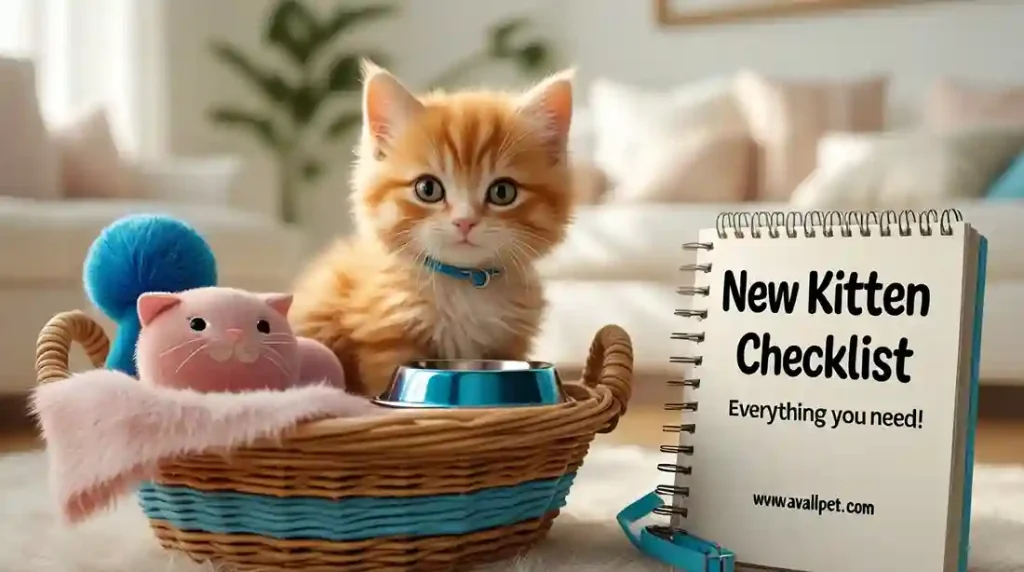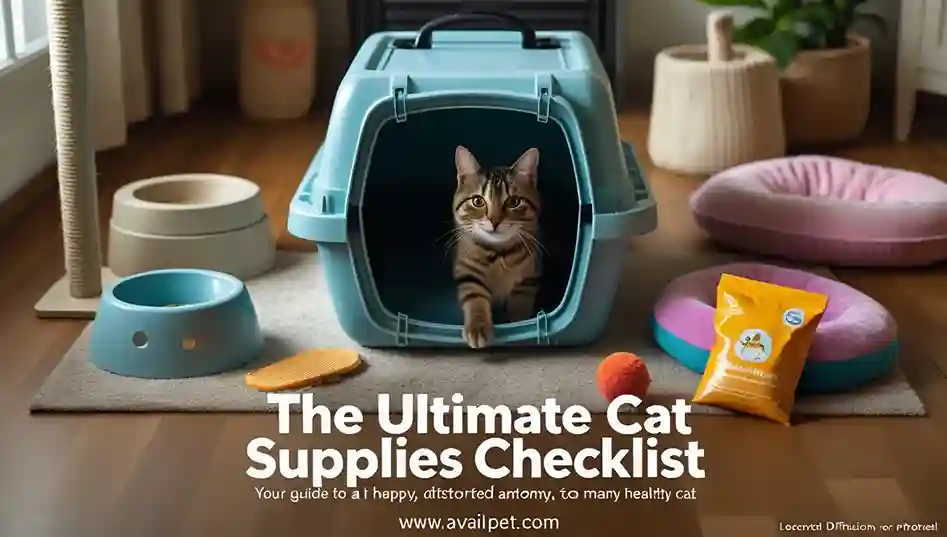Discovering that your cat has been peeing outside the litter box is one of the most frustrating and concerning problems a cat owner can face. Your mind might race—is my cat sick? Is this a behavioral issue? Are they upset with me? It’s crucial to understand that this behavior, known as inappropriate elimination, is rarely an act of spite. Instead, it’s a powerful signal that something is wrong, making it a critical topic in our guide to Common Cat Behaviors. Let’s systematically uncover why your cat peeing outside litter box and create an effective action plan.
Key Takeaways: First Steps for Litter Box Issues
- Medical First: A veterinary check-up is the essential first step to rule out painful conditions like UTIs or crystals.
- It’s a Signal, Not Spite: Your cat is communicating distress, not acting out of malice.
- Common Triggers: Problems often stem from medical issues, an unclean or poorly placed litter box, or environmental stress.
- The “+1 Rule: Provide one more litter box than you have cats (e.g., 2 cats = 3 boxes).
- Clean Thoroughly: Use an enzymatic cleaner to completely remove urine smells and prevent repeat offenses.
The Critical First Step: Rule Out Medical Causes
Before addressing any potential behavioral issues, you must eliminate medical causes. Inappropriate urination is a common symptom of several painful health conditions. A veterinary visit with a urinalysis is non-negotiable.
1. Urinary Tract Infection (UTI)
A UTI causes inflammation and a persistent, urgent need to urinate, which can lead your cat to avoid the litter box altogether due to the association with pain.
2. Feline Idiopathic Cystitis (FIC)
This is a complex and painful inflammation of the bladder, often triggered or worsened by stress. It’s one of the most common diagnoses in cats under 10 years old who are peeing outside the box.
3. Bladder Stones or Crystals
These can cause a life-threatening urinary blockage, especially in male cats. Signs include straining to urinate, crying out in pain, and only passing small amounts of urine. This is a medical emergency.
4. Kidney Disease or Diabetes
These conditions can cause increased thirst and urination volume, meaning your cat may not be able to reach the litter box in time.
5. Arthritis or Pain
An older cat with arthritis may find it too painful to step over the high sides of a litter box or may struggle to get to a box that’s located far away or down a flight of stairs.
Never assume inappropriate elimination is purely behavioral. Scheduling a veterinary appointment for a urinalysis and exam is the most responsible and caring first step you can take for your cat.
Behavioral & Environmental Reasons (After Medical Clearance)
Once your veterinarian has ruled out medical issues, it’s time to become a detective in your own home. The problem is often linked to the litter box itself or environmental stress.
1. The Litter Box Itself: Location, Cleanliness, & Type
Cats have strong preferences. Common box-related issues include:
- A Dirty Box: Would you use a filthy toilet? Scoop at least once, ideally twice daily.
- The Wrong Location: A box in a high-traffic, noisy, or hard-to-reach area (like a dark basement) can be intimidating.
- The Wrong Litter: Many cats dislike scented litters or certain textures (like crystals).
- The Wrong Box: Some cats feel trapped by hooded boxes; others prefer the privacy. The box might also be too small.
2. Stress & Anxiety-Driven Inappropriate Elimination
Cats are creatures of habit. Changes in their environment can cause significant stress, leading to this behavior. Common stressors include:
- A new pet, baby, or roommate in the home.
- Conflict with another household cat.
- Changes in your work schedule.
- Construction or loud noises.
- Stress can manifest in other ways, such as a cat meowing constantly.
3. Territorial Marking vs. Inappropriate Elimination
It’s crucial to distinguish between these two:
- Marking: Usually involves small amounts of urine on vertical surfaces (walls, furniture). The cat stands and their tail quivers.
- Inappropriate Elimination: The cat squats and voids a full bladder on a horizontal surface (the floor, your bed). This is the issue we are addressing in this article.
The Action Plan: A Step-by-Step Guide to Solutions
Follow this systematic approach to resolve your cat’s litter box issues. Be patient and methodical.
Step 1: The Comprehensive Veterinary Visit
Don’t settle for a basic check-up. Request:
- Urinalysis to check for infection, crystals, and concentration.
- Blood work to rule out kidney disease and diabetes.
- Physical exam that includes palpating the bladder and checking for arthritis pain.
Step 2: The Litter Box Audit & Overhaul
- The “+1 Rule”: Provide one more litter box than you have cats.
- Cleanliness Protocol: Scoop twice daily, completely change litter weekly.
- Location Strategy: Place boxes in quiet, low-traffic areas with multiple escape routes.
- Box Type: Offer both hooded and open options; ensure they’re large enough (1.5x cat’s length).
- Litter Choice: Use unscented, clumping litter 2-3 inches deep
Step 3: Environmental Enrichment & Stress Reduction
- Pheromone Therapy: Feliway diffusers can create a calming environment
- Vertical Space: Add cat trees and shelves for security
- Resource Distribution: Multiple feeding stations throughout the home
- Routine Maintenance: Keep feeding and play schedules consistent
Step 4: Proper Clean-Up Protocol
- Use enzymatic cleaners specifically designed for pet urine
- Avoid ammonia-based cleaners (smell like urine to cats)
- Treat affected areas thoroughly – black lights can help identify all spots
What NOT to Do: Common Mistakes That Make It Worse
- Never punish your cat – this increases stress and worsens the problem
- Don’t confine without adequate resources (multiple boxes in small spaces)
- Avoid scented litters and harsh cleaning chemicals
- Don’t move the litter box suddenly – make gradual location changes
- Never rub their nose in accidents – cats don’t understand this punishment
When to Seek Professional Help
Consult a certified cat behavior consultant if:
- Problems persist after 2-3 weeks of implementing all steps
- There’s ongoing conflict between multiple cats
- Your cat shows signs of severe anxiety or fear
- You’ve ruled out medical causes but see no improvement
If your cat is straining to urinate, crying in pain, or you see blood in their urine, seek emergency veterinary care immediately. These can be signs of a life-threatening blockage.
FAQs about cat peeing outside litter box
Why did my cat suddenly start peeing outside the box?
Sudden changes usually indicate a medical issue like a UTI, bladder stones, or the onset of a condition like diabetes. It can also be triggered by a sudden environmental stressor like a new pet or construction noise. A veterinary visit should always be your first step.
Is my cat doing this out of spite?
No, cats do not urinate outside the box out of spite or revenge. This is a myth. The behavior is either a medical symptom or a stress response. Your cat is trying to communicate that something is wrong.
How do I clean cat pee so they stop going in the same spot?
You must use an enzymatic cleaner specifically designed for pet urine. These cleaners break down the uric acid crystals that regular cleaners can’t remove. Avoid ammonia-based cleaners, as ammonia smells like urine to cats and can attract them back to the spot.
My cat poops in the box but pees outside it, why?
This often points to a medical issue specific to the urinary system, such as a UTI or cystitis, which makes urination painful. It could also indicate that your cat has a specific aversion to the litter box setup only when urinating—perhaps the box isn’t clean enough, or it’s uncomfortable for them to position themselves to urinate due to arthritis or the box size.
Conclusion
Dealing with a cat peeing outside litter box can be challenging, but it’s almost always a solvable problem. The key is to approach it methodically: always start with a veterinarian to rule out medical causes, then carefully audit your cat’s environment and resources. With patience and the right strategy, you can restore harmony to your home.
Understanding this behavior is crucial for your cat’s well-being. For insights into other common feline behaviors, explore our guides on the dramatic signal of a cat hissing or the comforting ritual of cat kneading.
Sources
- American Association of Feline Practitioners (AAFP). (2022). Feline Behavior Guidelines.
- Landsberg, G., Hunthausen, W., & Ackerman, L. (2013). Handbook of Behavior Problems of the Dog and Cat (2nd ed.). Elsevier.
- International Cat Care. (2023). Vocalisation – when is it a problem?
- Cornell Feline Health Center. (2022). Feline Hyperthyroidism.






